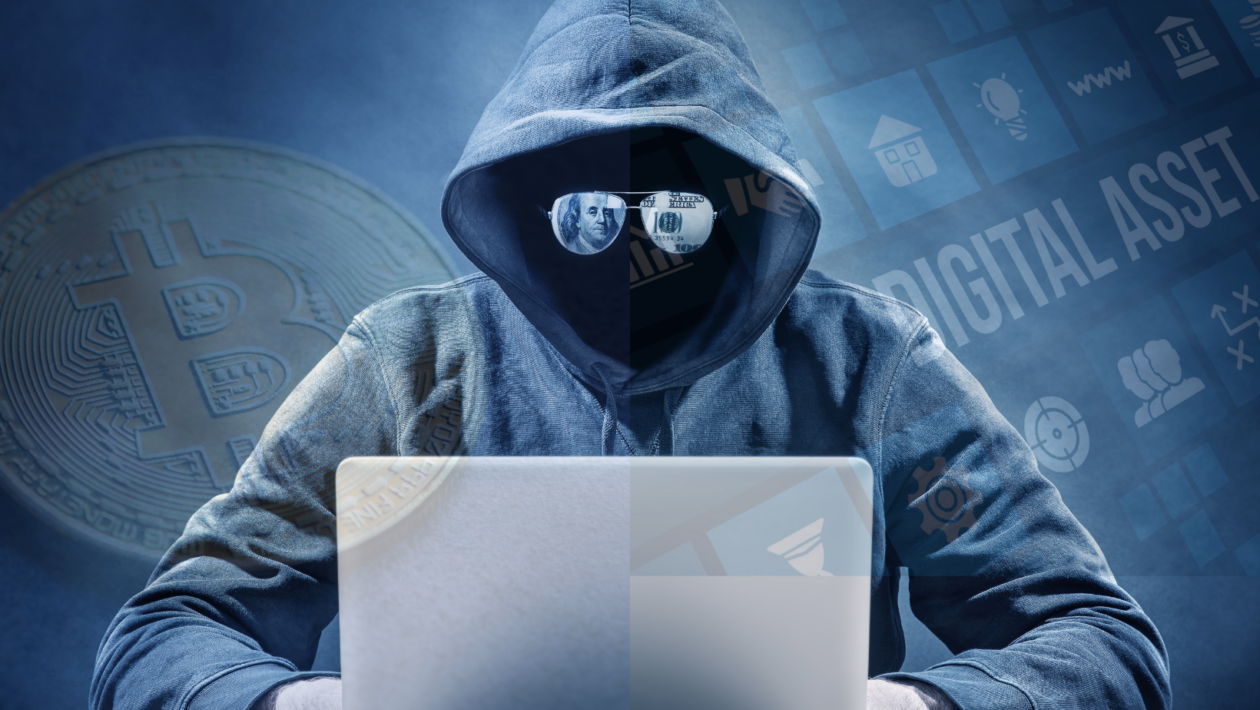Over the last several years, as major cryptocurrency exchanges and trading platforms have fallen victim to hacks or other fraudulent schemes, the number of exchanges and platforms placed into insolvency proceedings has risen. And the recent crash in crypto prices has already led to a number of insolvencies of crypto businesses, including Voyager Digital and Three Arrows Capital.
At first blush, insolvency representatives may think that tracing and recovering digital, intangible assets would be significantly more difficult than tracing “hard” assets. However, because most crypto asset transactions occur on the public blockchain, for those with technical know-how and a comprehensive understanding of international legal tools, it is actually easier to track crypto fund flows and maximize the prospects of recovery. For example, a painting stolen by a talented thief who leaves no trace may be lost forever, but a fraudulent Bitcoin transaction between exchange-hosted wallets may lead investigators right to the fraudster. The rise in crypto insolvencies presents unique opportunities for insolvency representatives and creditors who understand crypto to execute strategies — drawing on cross-border insolvency laws, other asset recovery tools and government forfeiture programs — to improve their prospects.
Tracing and recovery
Conceptually, tracing cryptocurrency is not much different from asset tracing in general. The idea is to “follow the money” — from the transaction in question or the origination point to where the currency is now. First, one identifies the wallet address(es) where lost or stolen assets either started or ended up, or identifies a transaction hash related to the lost assets. The next step is to trace the fund flow across the blockchain, which may require the use of forensic software that allows an investigator to map the movement of the funds including any stops on the way.
In the ideal scenario, the stolen assets will end up in one wallet or multiple wallets connected to one individual or entity. While wallet addresses are pseudonymous, if a wallet is hosted online by an exchange, it may be the case that know-your-customer (KYC) information will identify the wallet holder connected to the funds in question. Then, a lawyer who is able to harness legal tools in the jurisdiction where the money ended up can use the legal process to target the wallet holder in real life and recover the assets.
Ultimately, as suggested earlier, losing crypto assets may actually make it easier to recover those assets when compared with “hard” assets. As opposed to a situation where the trustee is trying to track down a yacht hidden in another jurisdiction, here, all fund flow happens on an online ledger that the trustee can access from her computer.
The UNCITRAL Model Law
Cross-border insolvency laws, and in particular the UNCITRAL Model Law on Cross-Border Insolvency, provide robust and effective legal regimes for tracing and recovering crypto assets that have been transferred across borders. The UNICTRAL (United Nations Commission On International Trade Law) Model Law provides insolvency representatives fast and efficient access to courts around the world. In jurisdictions that have adopted the Model Law, once a foreign insolvency proceeding has been “recognized” by the court, the insolvency representative has access to a suite of tools and remedies to assist with identifying and recovering assets located in that jurisdiction. The Model Law has been enacted in the U.S. (through Chapter 15), the U.K., and a wide range of other key jurisdictions, including most recently Singapore, Brazil and the Dubai International Financial Center.
The UNCITRAL Model Law enables the foreign insolvency representative to obtain discovery and evidence from parties located in the relevant jurisdiction without having to first initiate legal proceedings against those parties. This can be particularly helpful given that tracing cryptocurrency through the blockchain often does not lead to identification of the wallet holder. For example, using this discovery power, the insolvency representative could access KYC information collected by exchanges to which stolen cryptocurrency has been traced. Additionally, the UNCITRAL Model Law also allows the insolvency representative to obtain “entrustment” relief, which allows the representative to take control of the debtor’s assets located in the relevant jurisdiction. Entrustment relief provides a pathway to obtaining the turnover of stolen assets. It could also be used to compel third parties to turn over the private keys to wallets containing stolen cryptocurrency.
Our team at Kobre & Kim LLP successfully deployed some of these tools in its representation of U.K.-based exchange Dooga (known as “Cubits” at the time). Having lost an estimated US$32 million in a cryptocurrency hack by Chinese nationals, Dooga went into liquidation in the United Kingdom. Using forensic tracing, we traced stolen Bitcoin to two U.S.-based exchanges before filing a Chapter 15 case in San Francisco and using discovery powers to obtain the identities of the account holders. After persuading the exchanges voluntarily to freeze the accounts, we used entrustment relief to obtain turnover of the stolen cryptocurrency. As reported by Forkast at the time, the case set a precedent for recovering crypto assets in foreign jurisdictions.
Other legal tools
Apart from the UNCITRAL Model Law, there are other insolvency and non-insolvency tools that may similarly assist in tracing and recovering stolen crypto. In key offshore jurisdictions including the Cayman Islands and the British Virgin Islands (where crypto exchanges and funds are increasingly being registered), the courts have the discretion to grant relief to the representatives of foreign insolvency proceedings (even though the UNCITRAL Model Law is not in effect in those jurisdictions). There are also powerful asset recovery tools available in jurisdictions that follow English common law principles — including the United Kingdom, Hong Kong, the Cayman Islands and the British Virgin Islands. One is the so-called Norwich Pharmacal relief, which allows a claimant to obtain documents and information from a third party in anticipation of litigation against a wrongdoer. Another tool is the ability to seek a worldwide freezing order that restrains a person who is believed to have committed fraud from disposing of his or her assets. In a recent case, the Commercial Court of the British Virgin Islands granted a worldwide freezing order against unknown hackers of a BVI crypto trading platform, where the stolen assets were traced to an exchange in Croatia.
There are also remedies available under domestic insolvency law. Most jurisdictions allow an insolvency office holder or trustee to bring an action to recover property fraudulently transferred before the insolvency filing. And in situations where a third party has possession of the private keys necessary to use and monetize crypto assets, both insolvency and non-insolvency courts have the power to issue orders compelling the private keys to be disclosed to the trustee. If the third party refuses to comply, courts have various means of enforcing their orders, including through contempt penalties that could include substantial monetary fines and possibly even an arrest warrant.
Government forfeiture remedies
Recent U.S. Department of Justice (DOJ) led seizures, such as the February 2022 US$3.6 billion seizure of stolen cryptocurrency directly linked to the 2016 hack of the BVI-based crypto exchange, Bitfinex (the now-infamous “Croc of Wall Street” case), have demonstrated regulatory agencies’ interest and capacity in recovering crypto assets.
In many cases, it is worth considering whether seeking help from a government agency would be beneficial in recovering misappropriated assets. The government’s forfeiture power is almost always superior to that of a private claimant or a trustee’s rights. Choosing to present the case to law enforcement allows victims to pursue recovery of their stolen assets and take advantage of the government’s jurisdictional reach and discovery resources without the burden of civil litigation expenses. Also, if the DOJ’s prosecution has resulted in a conviction, the government must return recovered crypto assets to qualified victims. In addition, DOJ’s ability to seek civil forfeiture means that assets can be recovered even if the investigation does not result in a conviction. While DOJ investigations and prosecutions often take time and involve ceding some control over the investigation itself, involving the government lowers the cost of civil litigation while broadening the menu of options for seizure and prejudgment freezes domestically and abroad.
Although the United States remains the global leader in crypto-asset seizures and continues to increase its commitment to asset recovery efforts, other foreign jurisdictions, such as the United Kingdom and Hong Kong, are also actively looking to develop jurisprudence and increase resources given the growing prevalence of global crypto-fraud.
Conclusion
Tracing and recovering stolen or misappropriated crypto assets presents a host of challenges, and following the standard asset recovery playbook in this context may not yield fruitful results. However, creative and resourceful use of existing legal tools and remedies, available under both insolvency and non-insolvency law, can create a pathway to realizing recoveries for creditors and victims. When crypto exchanges and trading platforms go bust and enter insolvency, it is critical for the insolvency representatives to quickly formulate a global strategy tailored to the unique features of digital assets.
With contributions by Evelyn Sheehan and Timothy de Swardt.







